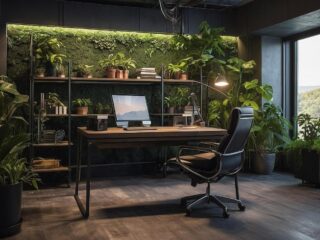
In the UK property market, outdoor space has transformed from a simple garden area into a powerful extension of the home. Homeowners are no longer just thinking about landscaping or decking — they’re building fully functional living spaces that add both lifestyle luxury and long-term property value. One of the fastest-growing examples of this trend is the rise of garden annexes — private, self-contained dwellings built within your own garden.
If you’re looking for a meaningful way to increase property value, improve daily living, and maximise unused outdoor space, this guide is for you.
What Are Garden Annexes?
A garden annexe is a separate, fully functional living space built within your garden — typically featuring a bedroom, bathroom, kitchen, and living area. Think of it as a mini-home on your property, designed for comfort, independence, and long-term usability.
These are not basic sheds or summerhouses — they’re self-contained living environments built to support real, everyday living. Modern homeowners are increasingly investing in garden annexes to maximise space, boost property value, and future-proof family living — without the cost, stress, or disruption of traditional home extensions.

Why Garden Annexes Are Surging in the UK
The demand for garden annexes has exploded due to several lifestyle and financial factors:
- High house prices: Cheaper to expand than move.
- Rise of multi-generational living: Keep family close, but independent.
- Home-based working & lifestyle: Separate work-life without sacrificing home comfort.
- Rental income potential: Airbnb, long-term rent, or guest accommodation.
- Future-proofing the property: Adds value now and even more later.
The Financial Value: How Much Can It Add to Your Property?
Installing a professionally built garden annexe can boost your property value by 15% to 25%, depending on its size, access, and design.
Why buyers pay more for homes with an annexe:
- Extra, independent living space = higher market desirability.
- Versatility: office, Airbnb rental, family accommodation.
- Ready-made future care solution (for aging parents).
- Built to full residential standards — not just a garden “room”.
In short: it instantly elevates your home to a multifunctional lifestyle property.
Lifestyle Benefits That Go Beyond Pure ROI
A garden annexe isn’t just about numbers — it’s about freedom.
Real-world uses include:
- Independent living for elderly parents or adult children
- Quiet work-from-home sanctuary
- Luxury guest accommodation
- Premium Airbnb listing
- Creative studio or wellness retreat
- Private fitness or therapy space
Unlike loft conversions or internal extensions, an annexe is separate, giving true privacy and reducing household stress.
Where to Place It for Maximum Impact
Strategic placement can improve both aesthetic and functional value.
Smart location strategies:
- Far end of the garden for maximum privacy
- L-shaped or angled placement to protect sightlines
- Hidden by planting or natural screening
- Positioned to allow direct side access (ideal for rental use)
- South-facing if used as a living or leisure space
Designers often call this “invisible separation” — connected, but independent.
Design Features That Wow Buyers (and Guests)
If you want your annexe to truly stand out, focus on premium lifestyle cues:
- Natural wood cladding or eco-inspired exterior
- Bi-fold or sliding glass doors for modern open living
- Underfloor heating + LED mood lighting
- Luxury bathroom & kitchenette finishes
- Soundproofing for total peace
- Sustainable insulation & low-energy tech
These are the kind of details that instantly tell buyers: this isn’t a shed — it’s a lifestyle upgrade.
And don’t forget to add decor that oozes luxury from www.jamaligarden.com. A few carefully chosen votive candle holders and unique silk flower arrangements can elevate the entire feel of your space. Use soft lighting to create an inviting, high-end ambiance that feels both cozy and sophisticated.
Do You Need Planning Permission?
In many cases, no — especially for single-storey units under permitted development.
However, if it’s being used as full-time living accommodation, or includes sleeping facilities, councils may classify it differently.
Always check with your local authority — especially if your home is:
- In a conservation area
- In an AONB (Area of Outstanding Natural Beauty)
- Listed
A good provider will handle all planning details for you.
Conclusion
A garden annexe is no longer just a luxury — it’s becoming a strategic investment in modern living. It enhances lifestyle freedom, supports family needs, enables rental income, and adds serious value to your home — all without the hassle of moving house.
As the UK continues to embrace flexible and future-proof living models, the garden annexe is rapidly becoming a defining feature of homes that sell faster, rent smarter, and live better.
FAQs
1. Do garden annexes require planning permission?
Not always — many fall under permitted development. It depends on use and size. Always confirm with local planning first.
2. Can I rent out a garden annexe on Airbnb?
Yes — if designed as a self-contained living unit and legally compliant. Side access is ideal.
3. How long does one take to build?
Typically 8–16 weeks from approval to completion — much faster than traditional extensions.
4. Are garden annexes insulated for year-round living?
A professionally built annexe is fully insulated and suitable for all seasons, not just summer.
5. Will it definitely increase my house value?
In almost every case, yes — especially if it’s high-spec, independently accessible, and positioned as liveable accommodation.



